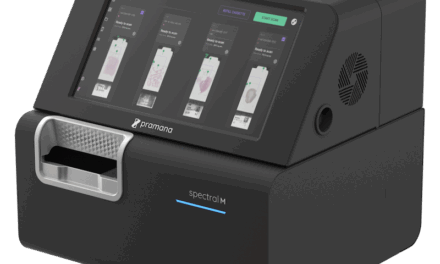Hamamatsu Photonics, Hamamatsu, Japan, published a new market report on perceptions and utilization of digital pathology solutions, At the Tipping Point. With findings from a survey of pathologists, laboratory directors, and hospital leaders across the United States, the report reveals that most see value in digital pathology. However, a significant number of pathology professionals aren’t leveraging whole slide scanning, and the large majority rely on sending physical glass slides for secondary consults.
“Technology has always been a part of bleeding-edge healthcare, but pathology is an area where digital imaging innovation has been slow to catch on,” says Don Ariyakumar, Hamamatsu’s product manager for whole slide imaging and digital pathology. “Using glass slides is reliable, but slow and inefficient, and a lack of superior digital solutions, along with a lack of FDA-cleared systems, for years made pathologists hesitant to adopt digitization. Now, digitizing slides can be fast and produces high quality images that are relatively small in file size. It also creates an essential archive to the original glass slides that can quickly and easily be shared or retrieved for further diagnoses.”
Key findings from the report include:
- In-depth interviews with key opinion leaders
- Key factors that influence digital pathology adoption
- The value of whole slide scanning for clinical diagnosis
- Impact of covid-19 for digital pathology
“Pathologists can’t sustain our profession now. It’s impossible to scale up our work, do more complicated testing and meet the demand of precision medicine the way pathology is practiced today, with the number of pathologists we have, and with the microscope as the dominant tool,” says Liron Pantanowitz, MD, director, anatomic pathology, department of pathology, Michigan Medicine, University of Michigan and a paid consultant to Hamamatsu, in the report.
“The pandemic has shown how important remote pathology is and has pushed healthcare leaders and clinicians to embrace and want to invest in digital solutions,” adds Ariyakumar. “This truly is just the tipping point—we’re going to see the field of pathology advance significantly as digital solutions are more widely embraced, leading to a rise in assisted diagnosis and quality control programs using AI algorithms. I’m excited to see how this change will help push the boundaries of medicine and healthcare as we know it.”
For more information, visit Hamamatsu Photonics.
Featured image: Hamamatsu NanoZoomer for whole slide imaging (Courtesy: Hamamatsu)





